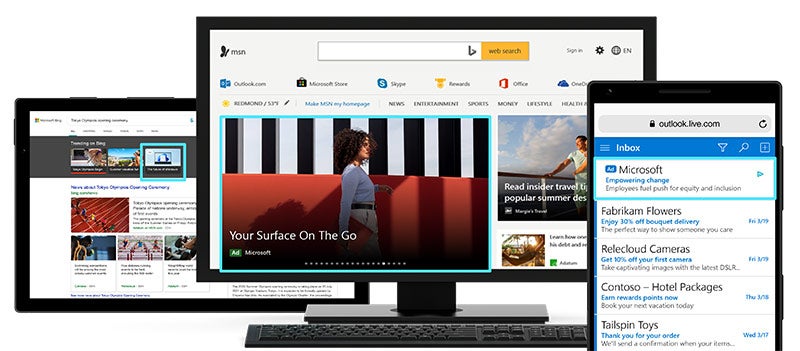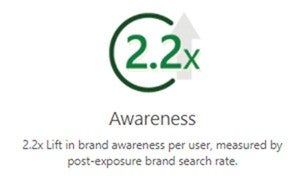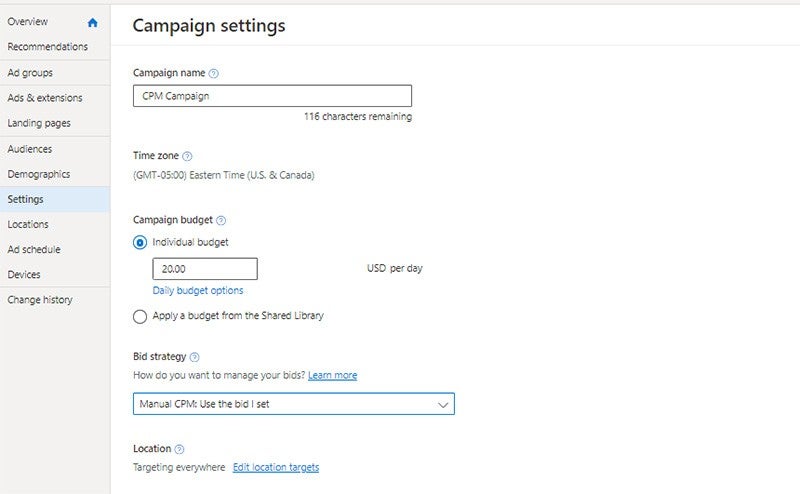Blog post
Build awareness for your brand with CPM pricing

Building awareness for your brand is a critical component of your marketing plan if you want to grow. It’s especially important when launching new products and services, and it increases the likelihood that consumers will recognize your brand while encouraging repeat purchases and leads.
Increasing brand awareness is easier than ever with cost per mille (CPM) pricing on the Microsoft Audience Network
The Microsoft Audience Network is our programmatic native solution. It comprises high-quality native placements curated through human and AI reviews with brand-safe environments on Microsoft-owned and operated sites, as well as select publisher partners. The Microsoft Audience Network can help you by showing your ads on premium sites where your customers are spending time, like MSN, Microsoft Edge, and Outlook, as well as CBS Sports, Fox News, and more.

Our first-party data shows that users exposed to Microsoft Audience Ads engage with brands at a higher rate. We’ve seen that after exposure to a brand’s Audience Ads, users are 2.2x more likely to search for that brand.1

Leverage CPM pricing on the Microsoft Audience Network
Advertisers desire different ways to bid on advertising space to help them grow their audience and gain brand awareness. With CPM, you can bid and pay for native advertising on a CPM basis and create campaigns optimized for ad impressions.
CPM allows you to specify the maximum amount you are willing to pay for your ad’s 1,000 impressions (or views). The average CPM on our marketplace is $2 to $6, and you’re only charged up to the maximum amount you’ve bid for 1,000 impressions. The actual CPM could be lower than the bid amount but never higher.
In line with industry standards, Microsoft Advertising impressions are registered when at least 50% of the ad appears on screen and is visible to the user for at least one second—this ensures that your Audience Ads are viewable, which means you get more value out of it.
Tip: If switching over from cost per click (CPC), start with your current average CPM. For new campaigns, Audience Network Planner can help you find a starting CPM bid.
When to use CPM pricing
The inclusion of CPM pricing, in addition to CPC pricing models, gives you the control to choose the proper pricing and measurement strategy for your campaigns. CPM is a good choice for campaigns seeking brand awareness or reach when the goal is a large number of views or impressions of your ad. It’s also convenient if you’re already using CPM on other platforms, desire comparable bidding on the Microsoft Audience Network, and seek controlled cost.
Tip: You don’t need to stick to one strategy! Now you can choose the right pricing model for each audience campaign—and mix and match based on your campaign goals.


How to enable CPM pricing
CPM is currently available for standalone audience campaigns on the Microsoft Audience Network.
You can enable CPM pricing in two ways:
- Select CPM as your bid strategy when you set up a new campaign.
- Update existing audience campaigns to CPM.
How to set up a CPM campaign
Set up your campaign, ad group, and ad:
- Enter the name of your campaign and your daily budget.
- Apply targeting settings and set up your ad group.
- Create your ads.
- Choose the CPM bid strategy.

Once you input your strategy and bid amount, you’ll see estimated monthly impressions, clicks, click-through rate, CPM, and estimated monthly spend.
Tip: Use the Audience Network Planner tool to help you determine the best bids based on your targets.
How to update existing campaigns to CPM pricing
Change the bid strategy from the campaign settings page. Review and modify individual bids for your ad groups to see your current CPM and decide the correct starting bid. Only manual CPM is available at this time.

Tip: Advertisers may change their bid type from or to CPM at any time on the Settings page of the campaign. You can only apply this change at the campaign level, not ad group or ad level. Individual campaigns with other bid types should remain separate.
[1] Microsoft first-party data.
Your input makes us better
Take our quick 3-minute survey and help us transform your website experience.




